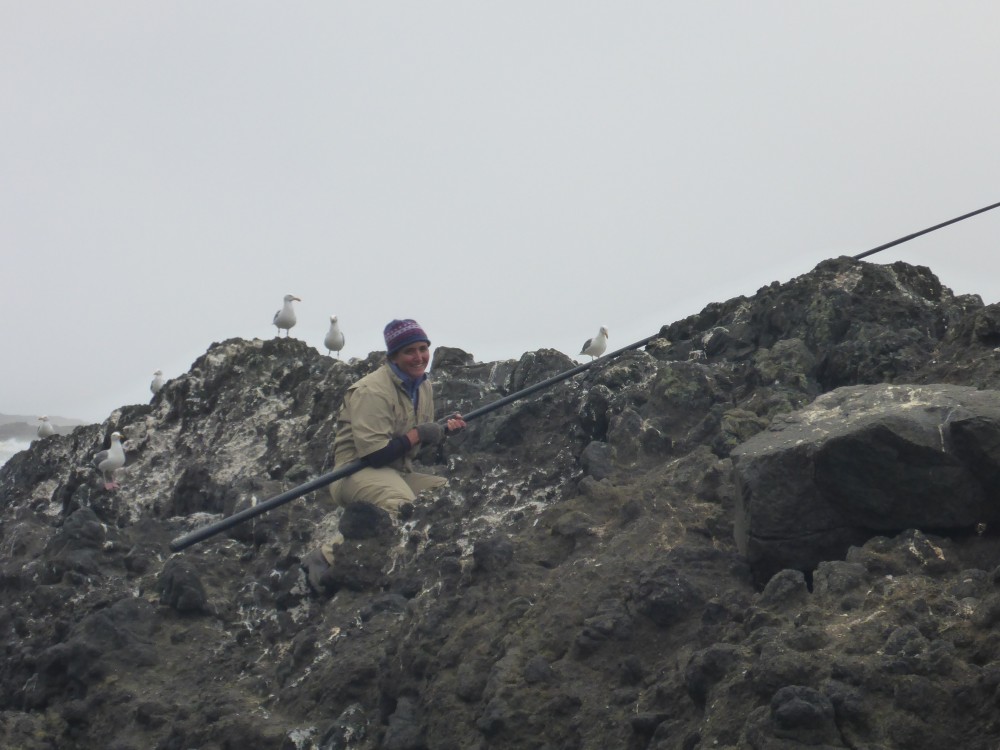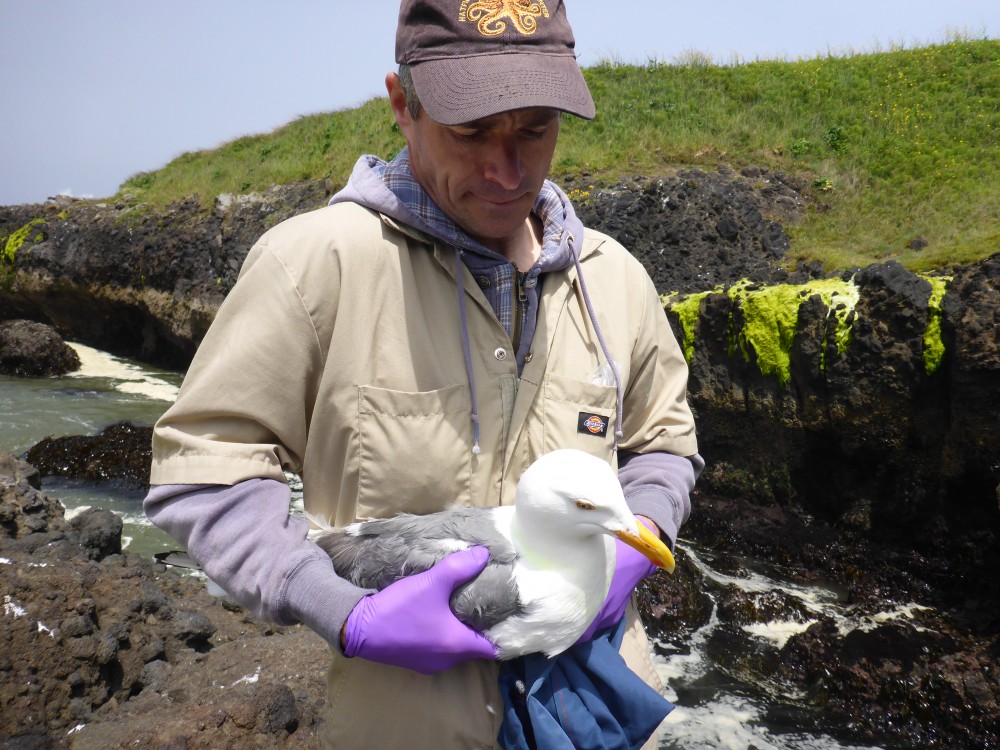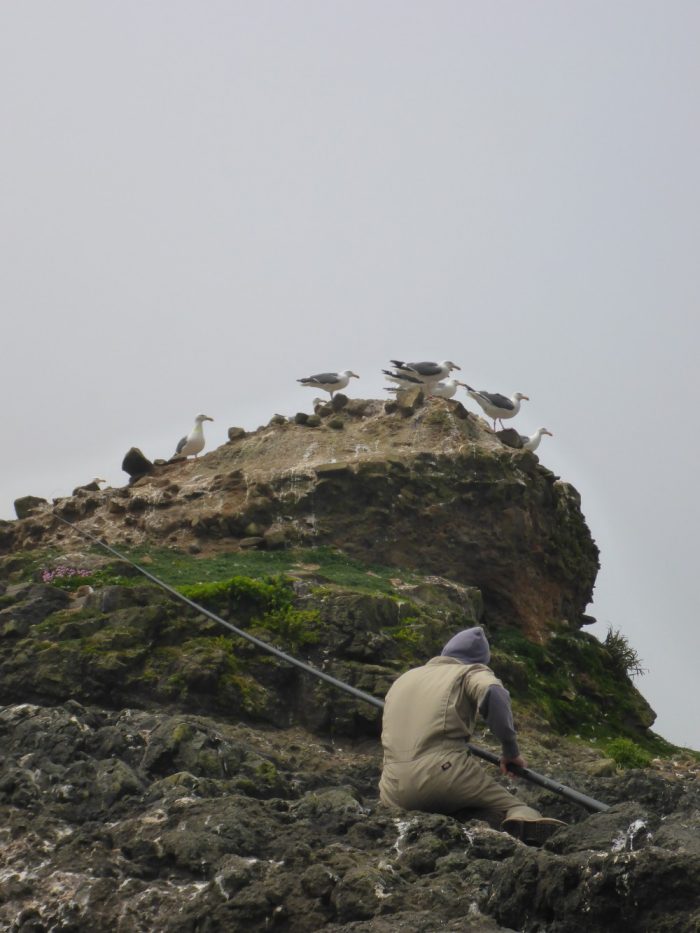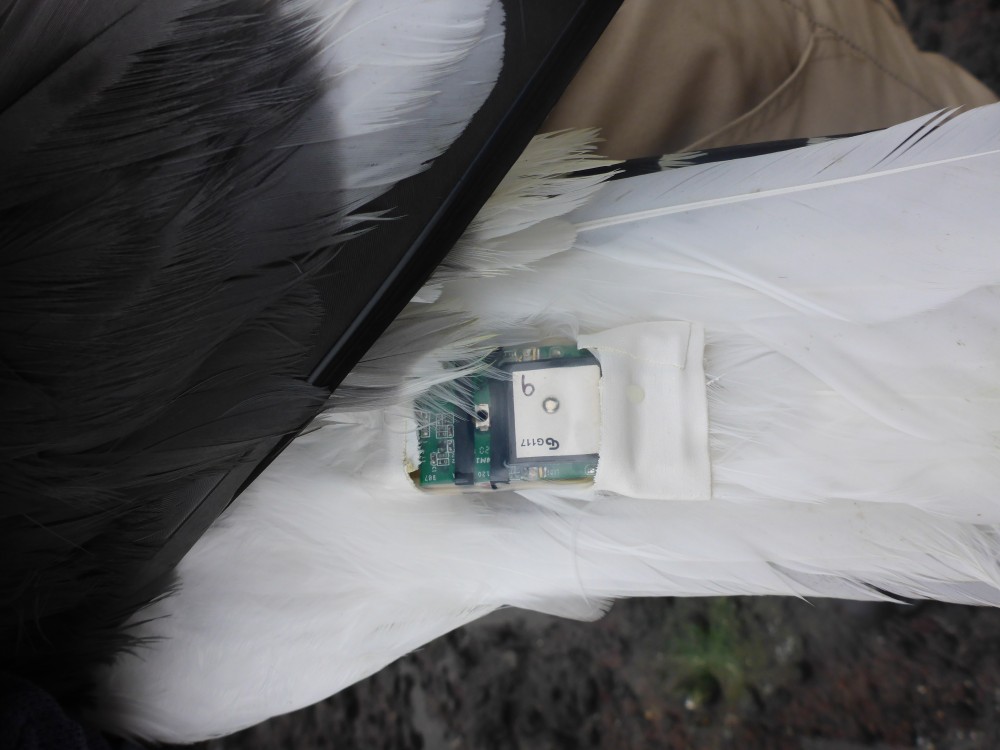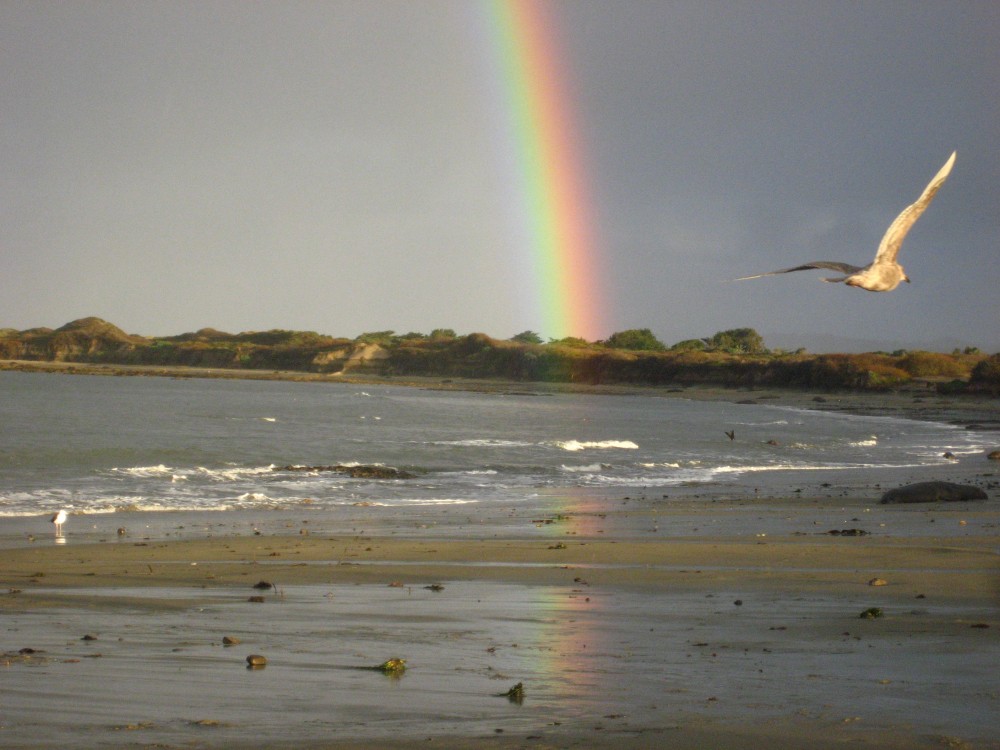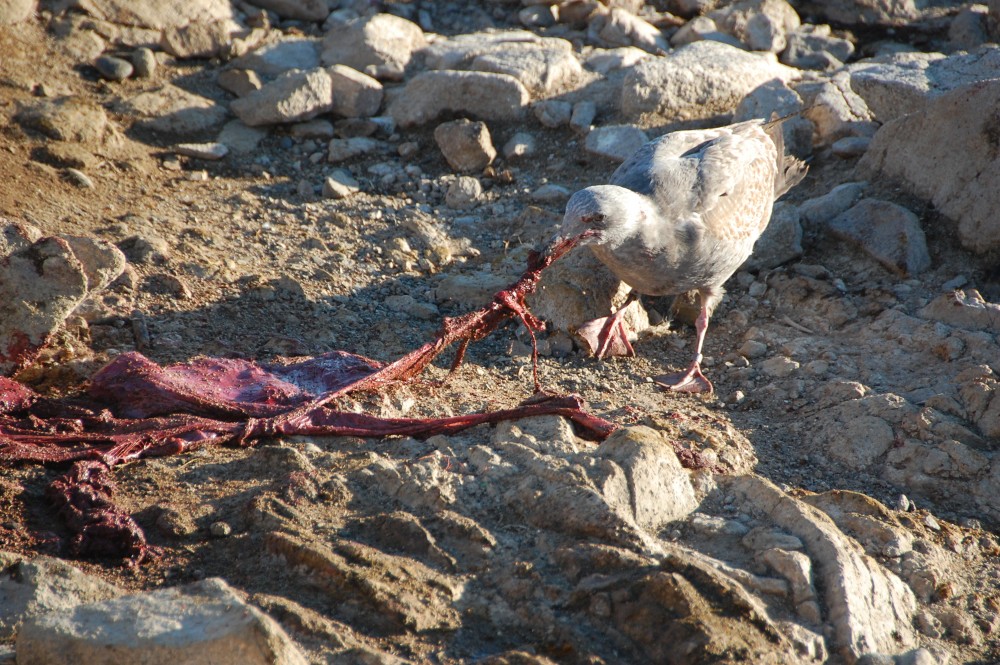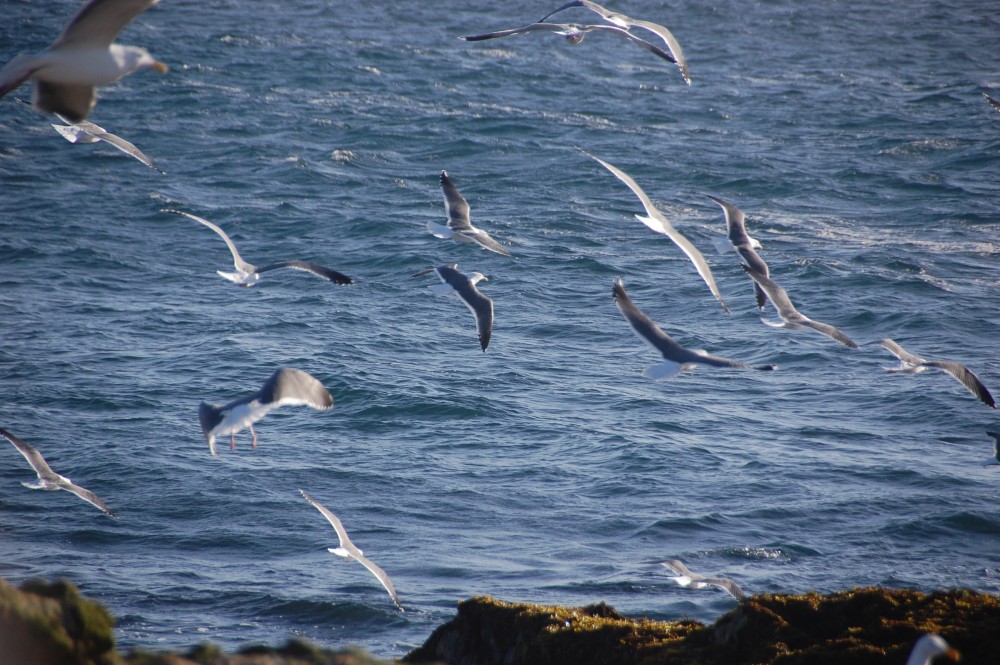By Stephanie Loredo, MSc student
“Violent” and “greedy” are words often used to describe gulls in populous areas where food or trash are readily available. Humans are used to seeing gulls in parking lots, parks, and plazas eating left over crumbs. Many people have even experienced menacing gulls ripping food away from their hands. Anecdotes like these have caused people to have negative perceptions of gulls. But could the repulsive attitude towards these birds be changed with evidence that not all gulls are the same? Well, Oregon may be home to an odd bunch.
Last year, the Seabird Oceanography Lab in conjunction with the GEMM Lab began putting GPS trackers on western gulls (Laurus occidentalis) off the Oregon Coast. One of the goals was to determine where gulls scavenge for food while raising chicks: at sea or on land in association with humans. We were particularly interested to see if western gulls in Oregon would behave similarly to western gulls in California, some of which make trips to the nearest landfill during the breeding season to bring not only food but also potentially harmful pathogens back to the colony.
During the 2015 breeding season, 10 commercially brand ‘i-gotU’ GPS data loggers were placed on gulls from ‘Cleft-in-the-Rock’ colony in Yachats, Oregon. The tags provided GPS locations at intervals of two minutes that determined the general habitat use areas (marine vs. terrestrial). After a two-week period, we were able to recapture six birds, remove tags, and download the data. We found that these western gulls stayed close to the colony and foraged in nearby intertidal and marine zones (Figure 1). Birds showed high site faithfulness by visiting the same foraging spots away from colony. It was interesting to see that inland habitat use did not extend past 1.3 miles from shore and the only waste facility within such boundaries did not attract any birds (Figure 1). Tagged birds never crossed the 101 Highway, but rather occurred at beaches in state parks such as Neptune and Yachats Ocean Road.

While it is hard to determine whether gulls avoided anthropogenic sources of food at the beach, preliminary analysis shows a high percentage of time spent in marine and intertidal habitat zones by half of the individuals (Figure 2). At a first glance, this is not as much as it seemed on the tracking map (Figure 1), but it nonetheless confirms that these gulls seek food in natural areas. Moreover, time spent at the colony is represented as time spent on coastal habitat on the graph, and thus “coastal” foraging values are over represented. To get a more exact estimate of coastal habitat use, future analysis will have to exclude colony locations and distinguish foraging versus resting behaviors.

‘Cleft-in-the-Rock’ is unique and its surroundings may explain why there was high foraging in intertidal and marine zones rather than within city limits. (The Cleft colony can also be tricky to get to, with a close eye on the tide at all times – See video below). The colony site is close to the Cape Perpetua Scenic Area and surrounded by recently established conservation zones: the Cape Perpetua Marine Reserve Area, Marine Protected Area, and Seabird Protected Area (Figure 1). Each of these areas has different regulatory rules on what is allowed to take, which you can read about here. The implication of these protected areas in place means there is more food for wildlife! Moreover, the city of Yachats has a small population of 703 inhabitants (based on 2013 U.S Census Bureau). The small population allows the city to be relatively clean, and the waste facility is not spewing rotten odors into the air like in many big cities such as Santa Cruz (population of 62,864) where our collaborative gull study takes place. Thus, in Yachats, there is more limited odor or visual incentive to attract birds to landfills.
Field crew descends headland slope to reach ‘Cleft-in-the-Rock’ gull island in Yachats, OR (colony can be seen in distance across the water). The team must wear wetsuits and carry equipment in dry bags for protection during water crossing.
In order to determine whether gull habitat use in Yachats is a trend for all western gulls in Oregon, we need to track birds at more sites and for a longer time. That is why during the breeding season of 2016, we will be placing 30 new tags on gulls and include a new colony into the study, ‘Hunters Island’. The new colony is situated near the Pistol River, between Gold Beach and Brookings in southern Oregon, and it is part of the Oregon Islands Wildlife Refuge.
We will have 10 ‘i-gotU’ tags (Figure 3) and 20 CATS tags (Figure 4), the latter are solar powered and can collect data for several weeks, months, and hopefully even years! These tags do not need to be retrieved for data download; rather data can be accessed remotely, providing minimal disturbance to the gulls and colony. With long-term data, we can explore further into the important feeding areas for western gulls, examine rates of foraging in different habitats, and determine how extensive intertidal and marine foraging is throughout the year.


We are excited to kick start our field season in the next couple of weeks and see how well the new tags work. We know that some questions will be solved and many new questions will arise; and we cannot wait to start this gull-filled adventure!
References
Osterback, A.M., Frechette, D., Hayes, S., Shaffer, S., & Moore, J. (2015). Long-term shifts in anthropogenic subsidies to gulls and implications for an imperiled fish. Biological Conservation, 191: 606–613.
